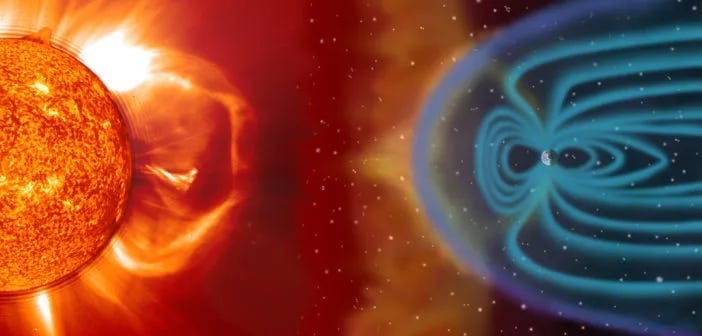Is Our Planet Prepared for the 2025 Solar Storm Threat?
Written on
Chapter 1: Understanding Solar Storms
The world may be on the brink of facing a catastrophic solar storm, a phenomenon that occurs roughly every century, possibly in July 2025. A recent study highlights this potential threat.

Solar storms are natural occurrences triggered by high-energy particles ejected from the Sun due to solar eruptions. Fortunately, Earth's magnetic field acts as a protective shield, redirecting these charged particles toward the poles and creating beautiful auroras.

However, the report titled Solar Superstorms: Planning the Internet Apocalypse warns of an impending space-air disaster with severe implications, including a potential "internet apocalypse." Astrophysicists estimate that there is a 1.6% to 12% chance of a solar storm of significant strength occurring within the next ten years. Addressing this risk and developing preventive measures is crucial for maintaining the Internet's long-term resilience, according to Sangeetha Abdu Jyothi of the University of California, Irvine.
Historically, a similar event occurred in 1921, causing simultaneous fires at electrical and telegraph stations worldwide, including the United States and England. Reports indicate that the “Aurora Borealis” was visible in New York just prior to this incident. This raises questions about how auroras, typically confined to polar regions, appeared in such unexpected locations.

In a previous article, I discussed how auroras can sometimes be observed in various regions during reversals of the Earth's magnetic field. However, this time, the concern lies with the potential visibility of these auroras even at the equator due to exceptionally strong solar flares, despite no magnetic field alterations.
Solar flares and coronal mass ejections (CMEs) from the Sun occur at regular intervals, with CMEs being significant discharges of plasma into space. These ejections can occasionally align with Earth, and scientists refer to this peak solar activity as the “Solar Maximum.”

Records show that solar activity has been monitored since the 1800s. This activity follows an 11-year cycle, during which major storms can manifest. The Carrington event of 1859 stands out as the most intense solar storm on record, with auroras reported as far south as Cuba.
It is believed that we are nearing another solar maximum, with predictions pointing to July 2025 as a critical month.

The critical difference between the Carrington event and today lies in our reliance on technology. In the current era, where technology and the Internet are integral to daily life, the repercussions of a similar event could be unprecedented.

A single day without internet could cost the global economy around $29 billion. Is it feasible for us to experience a solar storm capable of resulting in a global internet blackout?
Nature has documented various phenomena long before human observation. For instance, ancient clay jars provide insights into the Earth’s magnetic field, revealing its historical fluctuations.

According to researcher Erez Ben-Yosef from Tel Aviv University, ceramics contain tiny minerals that capture information about the magnetic field from the time they were created. It’s fascinating how ancient artifacts are now aiding modern science, providing evidence of solar activity recorded by nature itself.
In fact, studies indicate that trees and glaciers have served as historical records of solar activity. Carbon-14, generated through interactions with cosmic rays, offers insights into solar activity as trees absorb this isotope during photosynthesis. The rings of trees provide a timeline of cosmic ray intensity and solar activity spanning thousands of years.
Research has identified three significant cosmic events in the past 3,000 years: circa 650–670 BC, AD 775, and AD 994. While the precise causes remain uncertain, these events are believed to have been triggered by strong solar energetic particles (SEPs). These solar storms may have been megastorms, potentially 100 times more powerful than the Carrington Event. This evidence suggests that we are not limited to 11-year or 100-year cycles, but may also face 1,000-year cycles. Can we anticipate the consequences of exposure to such an immense storm?
Every day presents an opportunity to appreciate life, regardless of the weather.
— Marty Robbins
Chapter 2: The Risks of the 2025 Solar Storm
The first video discusses the risks associated with an impending solar storm, emphasizing the lack of preparedness for such an event.
The second video further explores the implications of a major solar storm, detailing how it could disrupt modern technology and infrastructure.